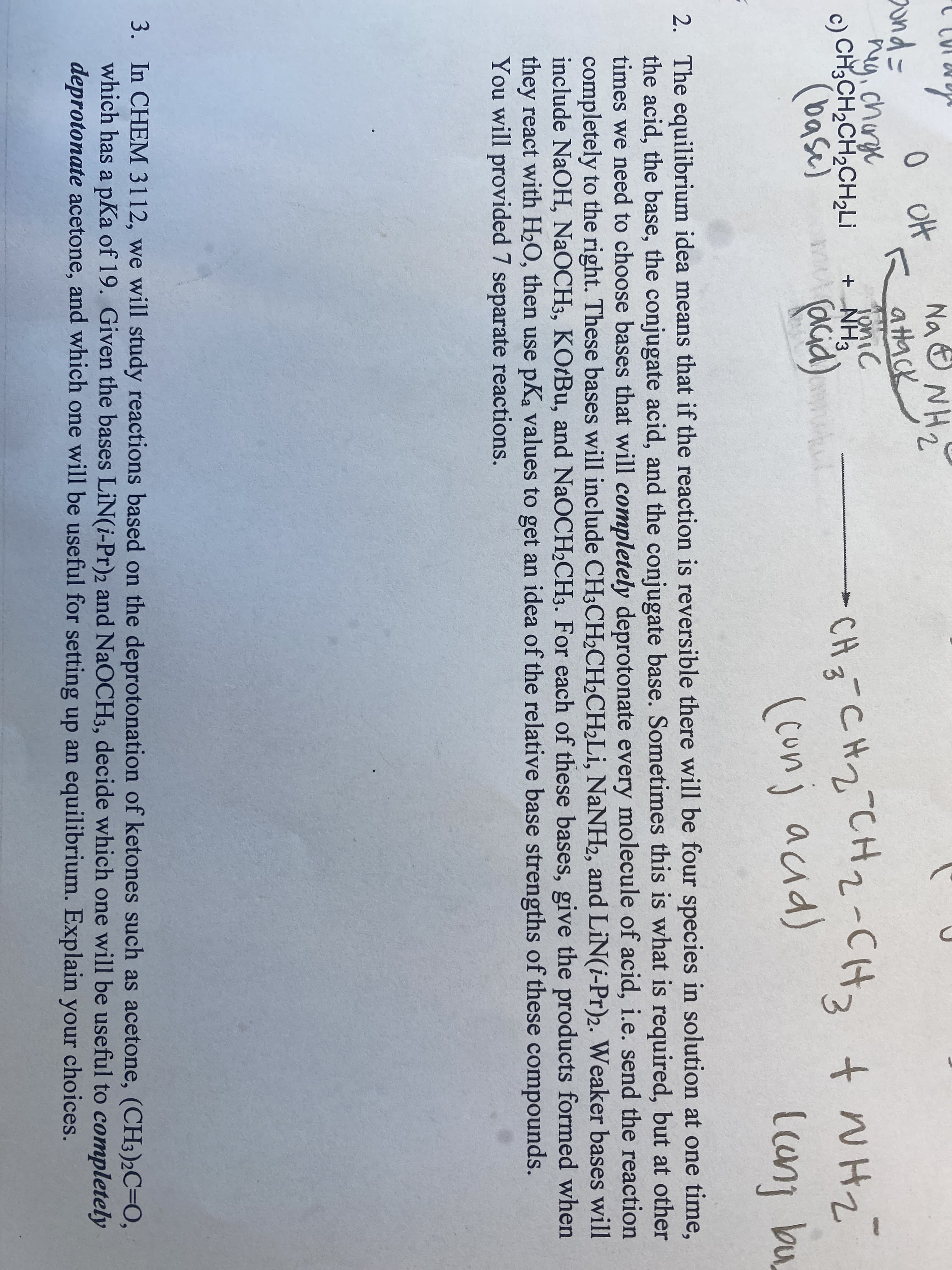aund= ney, churge Na O NH2 attack Tonic c) CH3CH2CH2CH,Li + NH3 (acid CH 3 CH2 CH2-CHz t WH2 (Conj acud) (base) (ca bu 2. The equilibrium idea means that if the reaction is reversible there will be four species in solution at one time, the acid, the base, the conjugate acid, and the conjugate base. Sometimes this is what is required, but at other times we need to choose bases that will completely deprotonate every molecule of acid, i.e. send the reaction completely to the right. These bases will include CH3CH,CH2CH;Li, NaNH2, and LiN(i-Pr)2. Weaker bases will include NaOH, NAOCH3, KOtBu, and NaOCH2CH3. For each of these bases, give the products formed when they react with H2O, then use pKa values to get an idea of the relative base strengths of these compounds. You will provided 7 separate reactions. 3. In CHEM 3112, we will study reactions based on the deprotonation of ketones such as acetone, (CH3)2C=0, which has a pKa of 19. Given the bases LiN(i-Pr)2 and NaOCH3, decide which one will be useful to completely deprotonate acetone, and which one will be useful for setting up an equilibrium. Explain your choices.
Ionic Equilibrium
Chemical equilibrium and ionic equilibrium are two major concepts in chemistry. Ionic equilibrium deals with the equilibrium involved in an ionization process while chemical equilibrium deals with the equilibrium during a chemical change. Ionic equilibrium is established between the ions and unionized species in a system. Understanding the concept of ionic equilibrium is very important to answer the questions related to certain chemical reactions in chemistry.
Arrhenius Acid
Arrhenius acid act as a good electrolyte as it dissociates to its respective ions in the aqueous solutions. Keeping it similar to the general acid properties, Arrhenius acid also neutralizes bases and turns litmus paper into red.
Bronsted Lowry Base In Inorganic Chemistry
Bronsted-Lowry base in inorganic chemistry is any chemical substance that can accept a proton from the other chemical substance it is reacting with.

Trending now
This is a popular solution!
Step by step
Solved in 3 steps with 3 images




